This Turkey in an Electric Roaster recipe answers all your questions about cooking a picture-perfect golden brown turkey in your electric roaster oven.
As Thanksgiving approaches, many home cooks wonder if using a turkey bag in an electric roaster is safe and effective for roasting the star of the holiday meal. With some handy tips and tricks, you can absolutely achieve delicious results cooking your turkey in a bag. In this comprehensive guide, we’ll cover everything you need to know about successfully using a turkey bag in an electric roaster oven.
What is a Turkey Bag?
First, let’s start with what exactly a turkey bag is. A turkey bag sometimes called an oven roasting bag is a large, heat-resistant bag designed to roast meat and poultry. Turkey bags are typically made from nylon, polyester or heat-safe plastics like polypropylene.
The bags have a loose shape to accommodate a whole bird. Many turkey bags have tiny venting holes and a moisture-lock system to seal in juices while allowing some steam to escape. Popular brands like Reynolds and Norpro make turkey bags sized for up to 24 pound birds.
Benefits of Cooking in a Turkey Bag
There are several excellent benefits to roasting your turkey in a bag in an electric roaster:
-
Locks in moisture and flavor – The bag seals in juices, broth and aromatics, keeping the turkey very moist and infusing it with flavors. No basting required!
-
Prevents drying out – The bag protects the turkey skin and meat from drying out in the dry heated air of the roaster.
-
Self bastes – Turkey juices collect in the bag so the meat essentially bastes itself while cooking.
-
Speeds cooking – The steamy environment reduces cooking time, handy if you’re pressed for time.
-
Easy cleanup – Containing the mess in the bag prevents greasy spills in your roaster.
Tips for Turkey Bag Roasting Success
Follow these handy tips and tricks for flawless results when cooking your turkey in a bag:
-
Choose an appropriately sized turkey bag with enough room for your bird
-
Do not stuff the turkey – stuffing may not cook properly and increases risk of bacteria Cook it separately
-
Preheat the empty electric roaster before adding the bagged bird.
-
Place turkey in the bag then carefully put it in the hot roaster. Avoid burns.
-
Set temperature to 325°F – 350°F per bag guidelines.
-
Do not open the roaster – it will increase cook time.
-
Use a meat thermometer and check temp early. Turkey may cook faster.
-
Let turkey rest 15 minutes before removing from bag to reabsorb juices.
-
Add broth, wine or water to roaster bottom to prevent drippings from burning.
FAQs About Turkey Bag Roasting
Here are answers to some frequently asked questions about using a turkey bag in an electric roaster:
Can you use any turkey bag?
Look for bags specially made for roasters. Reynolds and Norpro make bags sized for electric roasters.
Do you need to adjust cook time?
Yes, cook time may be reduced by 30 minutes or more with a turkey bag. Start checking temperature early.
How do you prevent sticking?
Lightly coat the bag interior with flour or use a bag with non-stick coating. This prevents sticking.
Can you stuff the turkey?
No, stuffing is not recommended as it may not reach a safe temperature. Cook it separately.
What if my turkey is too big for the bag?
Try double bagging. Place turkey in one bag then put that bag inside a second one.
Is it safe to reuse a turkey bag?
It’s not recommended. Used bags can have tiny holes or weaknesses. Use fresh bags each time.
How do I know when it’s done without a meat thermometer?
Check for visual signs like clear juices and the bag puffing tight around the turkey when fully cooked.
Are there alternatives to turkey bags?
Yes, you can roast an uncovered turkey in the roaster, basting frequently. Or cover with foil.
Can you use it for other meats?
Absolutely! Turkey bags work great for roasting chicken, pork and other meats in the electric roaster.
Turkey Roasting Tips and Tricks
-
For crispier skin, open bag and roast uncovered at 400°F the last 30 minutes.
-
Use a roasting rack in the bag to prevent it touching hot sides or bottom.
-
Add broth, wine or water to the roaster to prevent drippings from burning.
-
Make gravy from the turkey drippings after thoroughly straining out fat.
-
Let turkey rest before carving so juices redistribute.
-
For easier carving, transfer turkey to a cutting board before removing bag.
Get Perfectly Roast Turkey Every Time
As you can see, roasting your turkey in an oven roasting bag in an electric roaster is an easy, effective method for a tender, delicious holiday bird with minimal fuss. Follow the tips provided above for fantastic results. With a little practice, you’ll get perfectly juicy and flavorful roast turkey every time using this handy short-cut.

Tukey in a Roaster Oven
Preheat the electric roaster to 450 degrees F. or it’s highest temperature.
Remove the packaging and rinse the turkey under cool running water.
Remove the turkey neck and bag of giblets from the turkey cavity. You can throw these out or set them aside to make gravy, if preferred.
Place the turkey onto a large, rimmed baking sheet. I use paper towels to pat the turkey exterior dry.
Use the celery and carrots to make a cooking rack, and lay the veggies side-by-side across the bottom of the roaster.
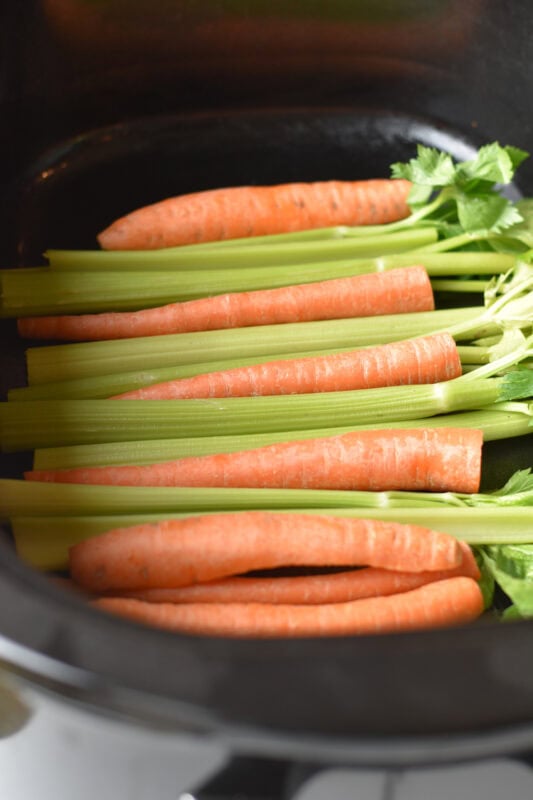
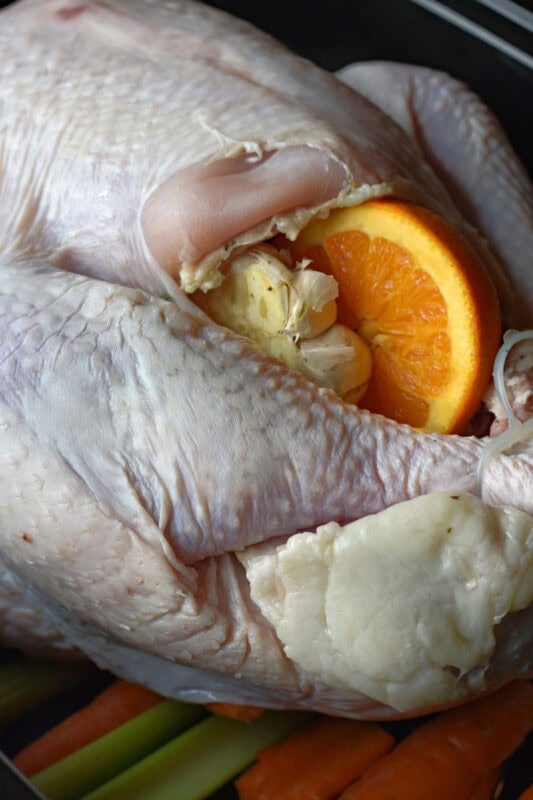
Insert the orange, lemon, onion, and garlic halves into the turkey’s cavity. Add a few bundles of fresh herbs, allowing them to protrude from the turkey’s cavity.
Place the prepared turkey onto the cooking rack in the roaster, breast-side-up.
Combine the olive oil and baking powder in a small bowl until smooth. Using a silicone pastry brush, spread it all over the exterior of the turkey.
Make sure to get down into all the nooks and crannies of the turkey skin.
Sprinkle the oiled turkey with seasoned salt all over. Cover the roaster with the lid and let the turkey roast for 30 minutes.
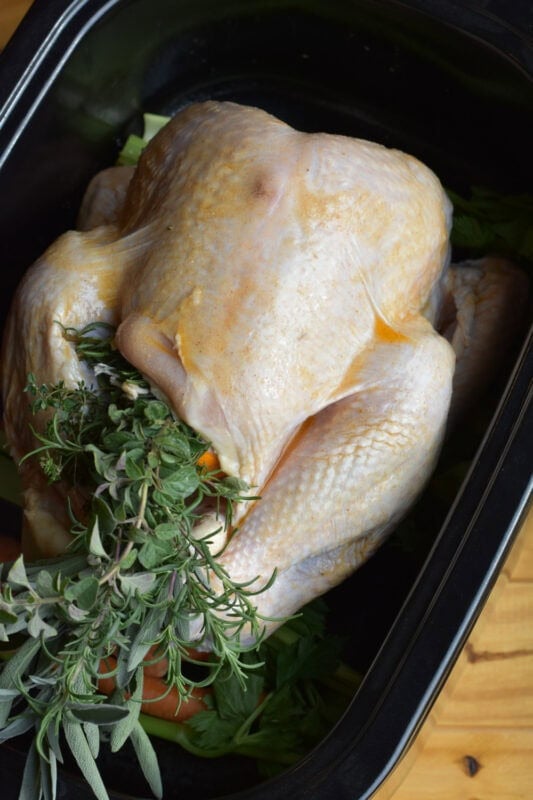
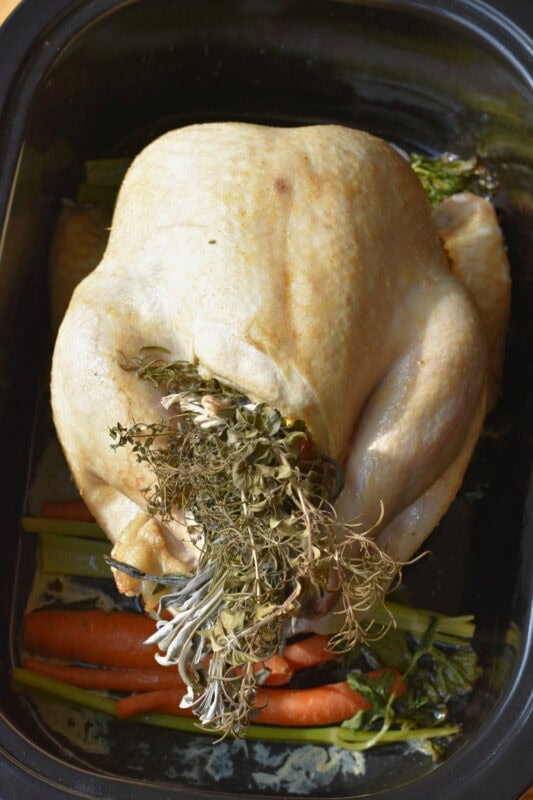
Remove the roaster lid, then lower the temperature to 325 degrees F. Add the broth to the roaster slowly since the roaster has just been cooking at 450 degrees.
Be careful of hot steam when the broth is added to the bottom of the roaster.
Continue roasting the turkey until the internal temperature reaches 180°F in the thigh and 165°F in the breast when tested with an instant-read meat thermometer.
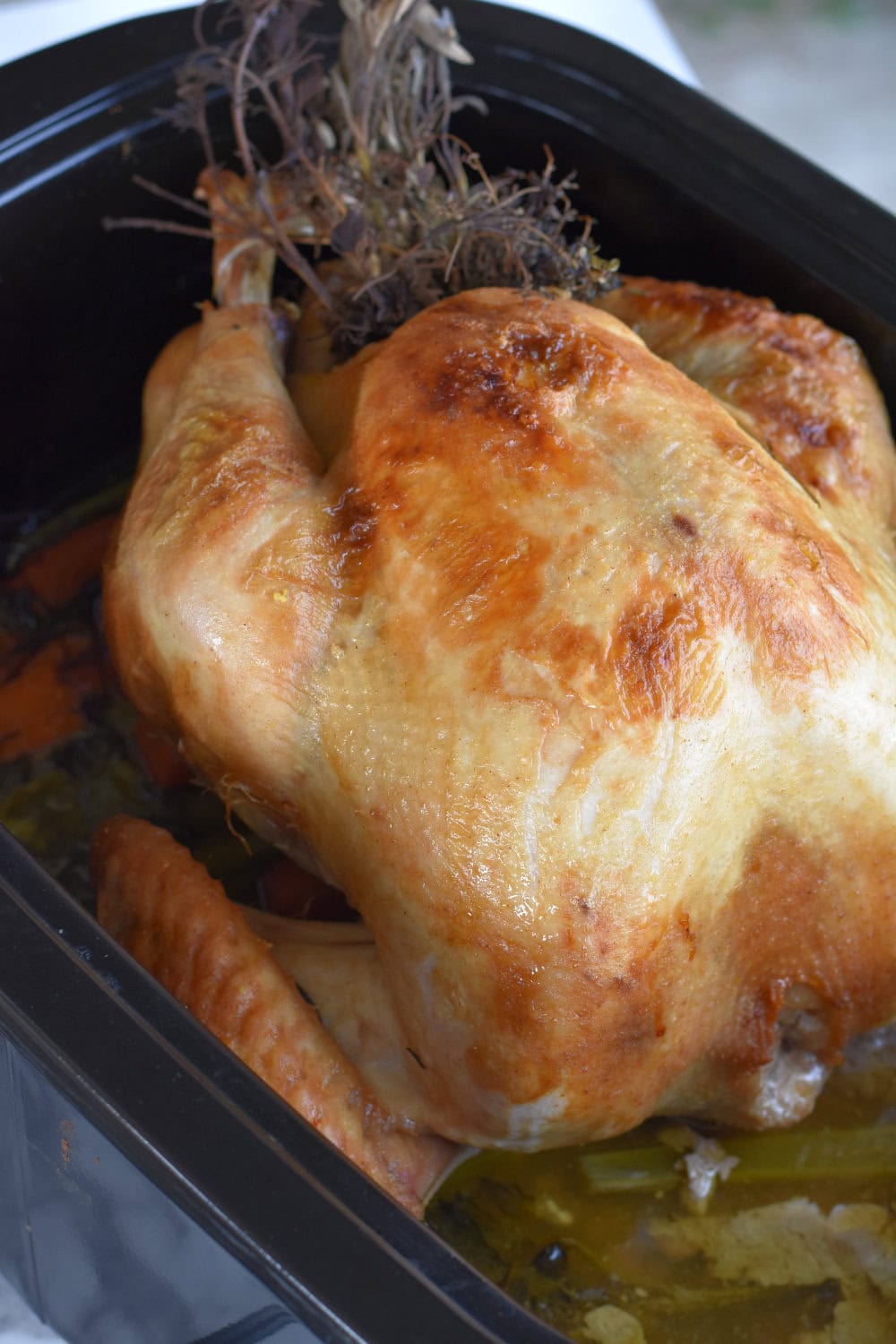
Carefully lift the turkey from the roaster oven to a large cutting board. Cover with foil and allow the turkey to rest for at least 30 minutes before slicing.
If you plan to make turkey gravy, strain the drippings that remain in the roaster to use for the gravy.
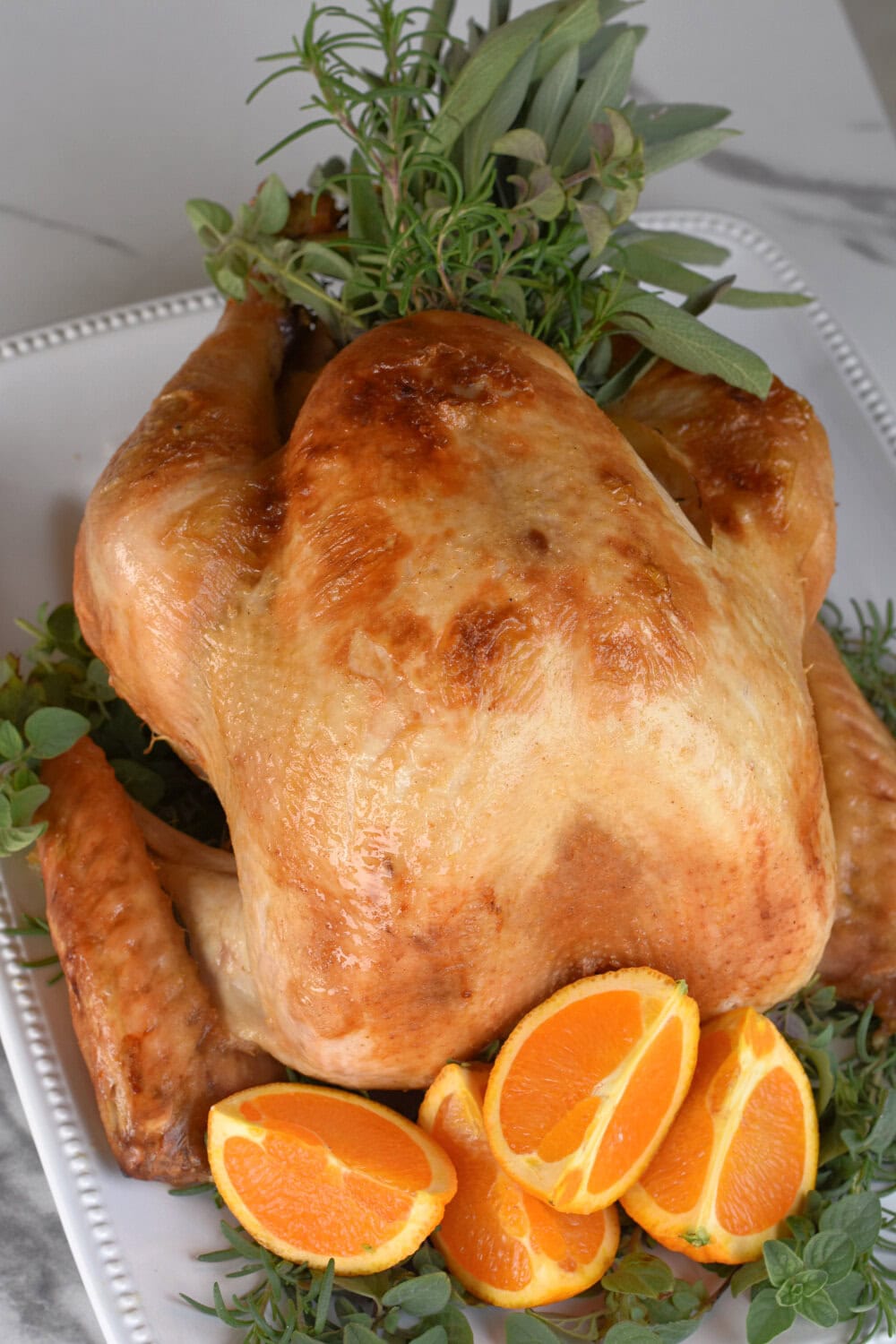
Can you Brine a Frozen Turkey?
Yes, you can put a frozen turkey into brine. It just needs to be defrosted enough to remove the bag of giblets and neck from the turkey’s cavity.
The turkey will finish defrosting while in the brine. Always keep the turkey and brine refrigerated to keep it at a safe, chilled temperature.
